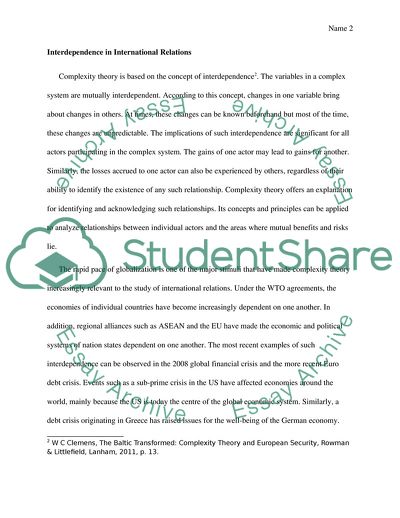Cite this document
(The Increasing Importance of Complexity in International Relations Report Example | Topics and Well Written Essays - 4000 words - 3, n.d.)
The Increasing Importance of Complexity in International Relations Report Example | Topics and Well Written Essays - 4000 words - 3. https://studentshare.org/politics/1804096-essay
The Increasing Importance of Complexity in International Relations Report Example | Topics and Well Written Essays - 4000 words - 3. https://studentshare.org/politics/1804096-essay
(The Increasing Importance of Complexity in International Relations Report Example | Topics and Well Written Essays - 4000 Words - 3)
The Increasing Importance of Complexity in International Relations Report Example | Topics and Well Written Essays - 4000 Words - 3. https://studentshare.org/politics/1804096-essay.
The Increasing Importance of Complexity in International Relations Report Example | Topics and Well Written Essays - 4000 Words - 3. https://studentshare.org/politics/1804096-essay.
“The Increasing Importance of Complexity in International Relations Report Example | Topics and Well Written Essays - 4000 Words - 3”. https://studentshare.org/politics/1804096-essay.


